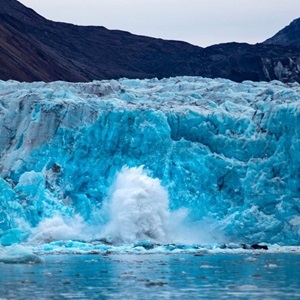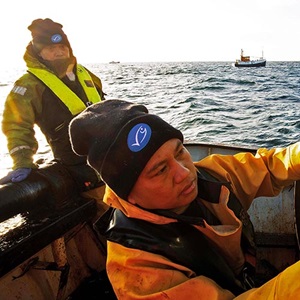By Ritu Singh
The US Atlantic Surfclam and Ocean Quahog (ASOQ) fishery is widely regarded as an exemplary operation with a long history of sustainable management. The fishery’s catch record consistently shows the least bycatch and fewest discards of all US fisheries.
The ASOQ fishing grounds stretch almost 500 miles along the United States’ eastern seaboard, from Virginia in the south, to Georges Bank, Massachusetts in the north, and out to 200 nautical miles offshore. The fishery has been harvesting Atlantic surfclams and ocean quahogs - two large species of clam - since the 1950s. For much of that period, the grounds for the two species were separate and managed using well-established geographical boundaries.
This system worked well for ASOQ, with everyone assuming the ordinarily sedentary clams would remain within the regions dictated by their biology. Then, climate change began altering things; the surfclams started showing up among the ocean quahogs, affecting the fishery’s sustainability strategy and threatening its future.
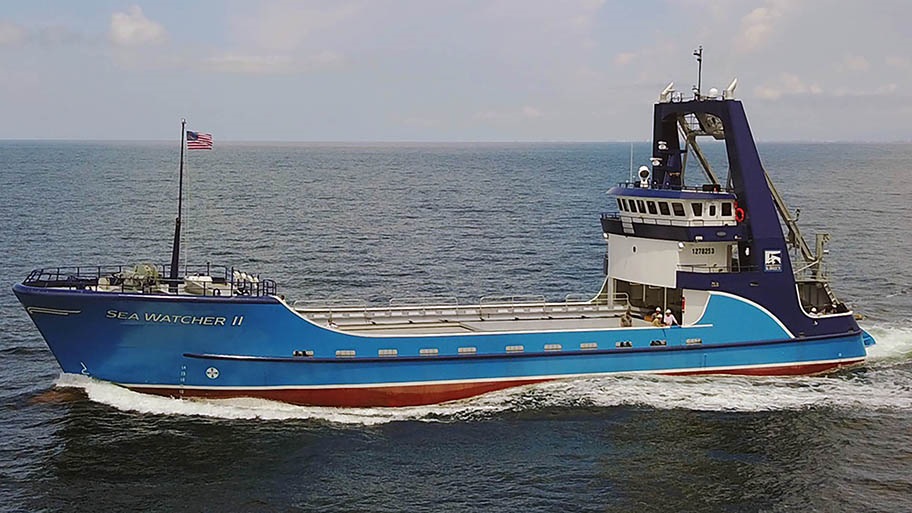
Clam harvesting and processing vessel, Sea Watcher II © Sea Watch International
A changing environment
Surfclams generally live in warm shallow waters and are clearly separated from the deeper living, cold-water ocean quahogs. Historically, the two species were fished separately too – one species per trip. This restriction is there for good reason: to accurately track landings, prevent overfishing, and keep discarded catch low.
In the 1990s, the distribution of surfclams was noticeably shifting. Vessels targeting them began fishing further offshore and frequently found the surfclams intermixed with ocean quahogs, something rarely observed in previous decades.
Regulations decreed that fishers had to discard one of the species from their catch. But sorting the two species onboard was prohibitively expensive, and increased discards were counterproductive for retaining the fisheries’ sustainability.
Nobody expected the two species to become such close neighbours, so management regulations and technological advances regarding their separation had never been explored.
A new partnership forms
The fishery turned to marine biologists Professor Eric Powell and Dr. Roger Mann to incorporate academic expertise into the stock assessment process, and this established a partnership between National Marine Fisheries Service (NMFS) scientists and academia.
They didn’t know at the time that this partnership would lead to the formation of the Science Center for Marine Fisheries (SCEMFIS), with joint support of the industry and the U.S. National Science Foundation, and that a major study of ongoing climate impacts on the fishery would be a long-term focus.
“If you had asked me in 2000 what was going on, I would never have talked about global warming.”
SCEMFIS
The wrong hypothesis?
In the late nineties federal surveys found that, in the southernmost region of the fishery, surfclams were densely distributed and uncharacteristically small. The fishery called upon Powell and Mann.
For the next few years various hypotheses were considered, including insufficient food to feed the dense population. Then in 2000, within a period of months, all of the inshore clams died. This mass mortality was initially thought to be due to an emergent disease. But a joint federal-academic study pointed instead to increased temperatures, what is now called a marine heatwave.
“Now looking back, we can see that since the late 70s the surfclams were moving North in their distribution. But we didn’t have the perspective to realise we had made the completely wrong hypothesis about why they weren’t growing to their previous sizes", says Professor Powell.
"In retrospect we can see very clearly it was because warming ocean temperatures in the Northwest Atlantic – one of the fastest warming regions on Earth – were affecting their ability to feed, but also permitting surfclams to colonise habitat further offshore in cooler waters.
But if you had asked me in 2000 what was going on? I would never have talked about global warming."
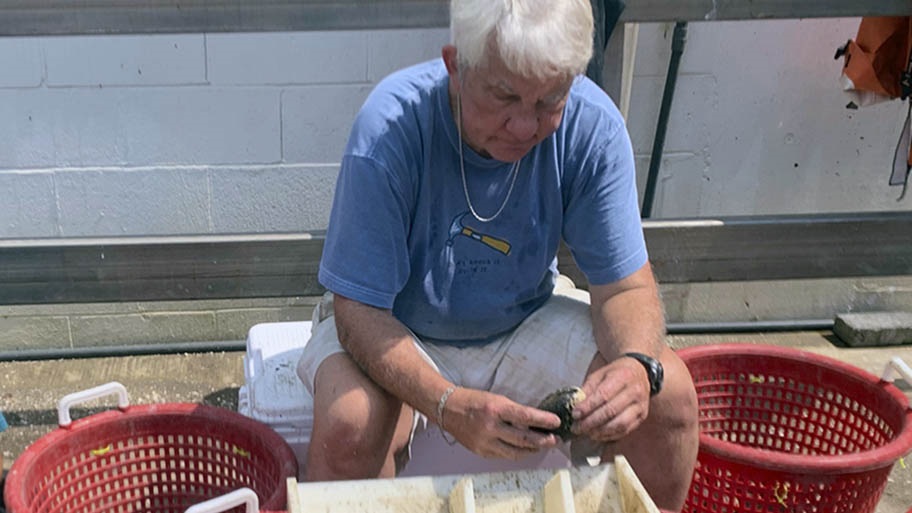
Professor Powell © Theresa Redmond
The need to adapt
The warming waters were driving planktonic surfclam larvae to colder, deeper regions. Adult surfclams remaining in shallow water died, but their transient larvae successfully settled and matured among established deep-water residents, the ocean quahogs.
Ocean quahogs, meanwhile, are slower to react, but they are incredibly well adapted. They are an ancient species and are among the longest-lived animals, with a maximum lifespan exceeding three-hundred years. They are record setters among bivalves for living without oxygen for extended periods. So, when water temperatures are too high, ocean quahogs simply go to sleep, burrowing into the sand and ‘switching off’ their systems until conditions are better.
As Dr Mann puts it: "Ocean quahogs really don’t read the extinction literature at all! Climate change-induced increases in ocean water temperature are not going to drive them extinct. They just move very slowly, compared to surfclams, and have successfully used the same tactic for thousands of years, through many different changes to the planet’s climate. These animals work on different timescales and over different geography than us, so the way we manage them needs to adapt."
While these hardy creatures aren’t going anywhere fast, studies show their life histories are accelerating. They are reaching maturity at younger ages and spawning sooner. This provides a positive impact for the fishery, as the ocean quahogs' productivity increases with their growth rate, improving their resilience to fishing.
New models for measuring
Though the ocean quahogs' increasing growth rate could be seen as helpful, climate change was still throwing up multiple challenges to the fishery's sustainable management. Powell and Mann’s input became increasingly valuable.
With SCEMFIS funding, graduate students at Mann’s lab successfully produced a method for determining the age structure of large numbers of quahogs quickly and efficiently. Meanwhile, Powell and his students, with co-workers at several other academic institutions, created a new numerical model for population dynamics.
Mann says the students working on this project elevated the science to a point where it became a practical manual for fishery management: "Now we have a method that doesn’t rely on the old equilibrium assumptions around stock abundance. We can now change the baseline, much like climate change does, and we can predict with more clarity what it will do. This will help the fishery adapt."
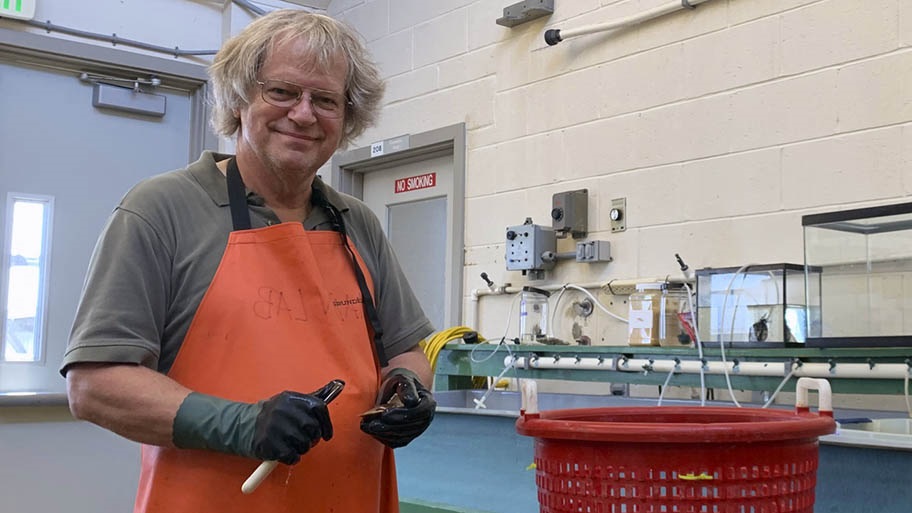
Dr Roger Mann in the lab © Theresa Redmond
The final challenge?
While understanding of the impacts of climate change on the clams has greatly improved, the regulation decreeing the separate harvesting of the two species remains.
As Powell says, ASOQ is “one of the cleanest fisheries in the US, [but] the regulation that exists hasn’t really kept up with the animals’ response to climate change. The challenge is how to revise the regulations so both these species can be landed without causing a problem to the inherent stability of the fishery and management.”
Powell and Mann continue working on the challenge with colleagues at SCEMFIS, in a coordinated research programme between academic scientists, government regulators and the fishing industry. Joe Myers of Sea Watch International, a major harvester and processor of the clams, represents the industry on this project and is optimistic for a harvesting solution.
Though he long ago “swapped his farm management hat for a wetsuit”, Myers thinks the answer might just come from his upbringing on his family’s farm near Pittsburgh. Instead of fisheries scientists, SCEMFIS has engaged agricultural and biological systems engineers, who provide candidate technologies and machine learning to help separate surfclams from ocean quahogs.
“I love watching videos from the apple and tomato worlds. They have some very high speed, proficient sorting technologies to be able to get down to the exact size or attributes of the product that the market is looking for. We're a long way from that, but we're on that path to be able to start to figure out how to do a similar thing with clams,” says Myers.
The models and subsequent research have found that with the continued support of their scientific colleagues, ASOQ can take steps to adapt and mitigate the impacts of climate change on their livelihoods and food security.

